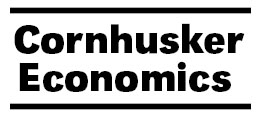Agricultural Economics, Department of

Cornhusker Economics
Date of this Version
2-6-2019
Document Type
Newsletter Issue
Citation
Cornhusker Economics
Abstract
Obesity rates in the United States have risen dramatically over the past five decades, reaching what many public health officials have referred to as epidemic proportions. A common policy response to this obesity epidemic—which is often attributed to overconsumption of highly caloric, unhealthy foods—has been to increase consumers’ access to nutrition information to help them to make healthier choices. Recently, the increasing frequency of food consumption at restaurants led to the development of nutrition labeling requirements for restaurants with 20 or more locations. The rule, requiring food retailers to post calorie amounts and to make available information about other nutrients upon request, went into effect on May 7, 2018. While this does not provide enough time for widely available evidence on the effect of this newly available information, some local governments, such as New York City, in the United States were early adopters of the approach, providing a sense of the likely effectiveness of calorie labeling in restaurants and other retailers of prepared foods. Research that examines evidence from multiple locations and individual studies, referred to as meta-analysis, does not find much evidence that calorie labeling changes consumers’ food purchasing behavior (see, for instance, VanEpps et al., 2016 or Bleich et al., 2017).


Comments
agecon.unl.edu/cornhuskereconomics
February 6, 2019